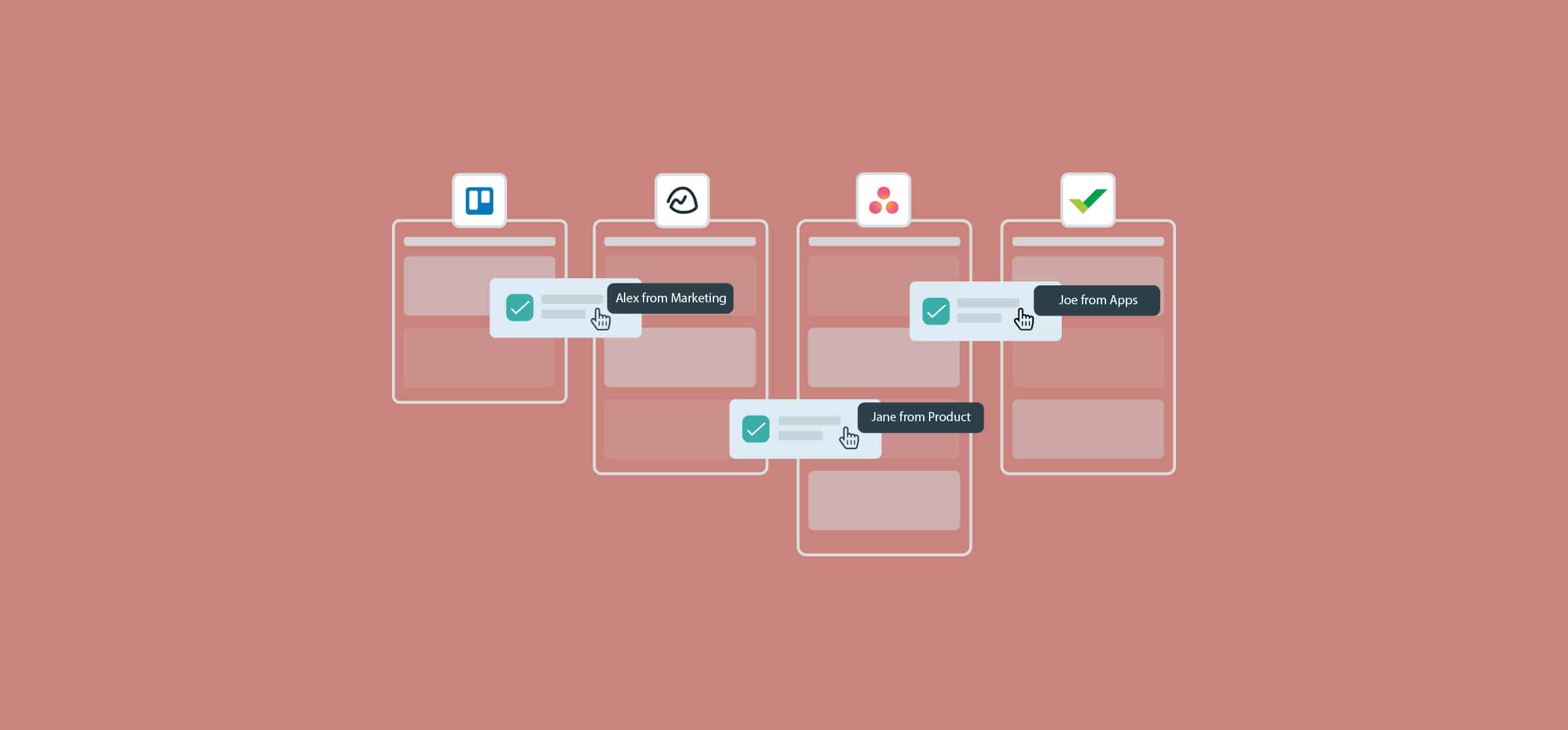How to Optimize Cross-Functional Project Workflows With Unito
Running a project is hard enough when there’s only one team involved. Add more teams and you have more potential for complications. Lackluster communication, outdated information, and radio silence from collaborators can all push a cross-functional project over budget and past its deadline. Add in multiple work management tools and you have a recipe for frustration.
With Unito, leaders and collaborators can create smooth, painless cross-functional project workflows. Here are two examples.
Running projects with interdisciplinary squads
Unito uses interdisciplinary squads to tackle big projects. This is a group of people, brought together from different teams. Instead of having to communicate across a divide between teams, squad members know exactly who to reach out to when they need help on that specific project. That said, even squads run into communication and collaboration blockers.
The workflow without Unito
The first challenge a squad might run into is agreeing on a single work management tool. When you’re bringing a variety of people together to work on a project, they all come with their own way of doing things. Some developers might only work in GitHub, while others also dip into Jira. And if you bring marketers, salespeople, or managers into the mix, you’re now dealing with a whole suite of tools. Getting everyone to agree on a single tool for the project shouldn’t be the solution. No one should have to sacrifice their work management needs just to fit in with the squad.
Communication is another difficulty faced by interdisciplinary squads. Sure, it’s easy to get updates across when the whole squad is sitting in the same room. But squads usually have multiple projects going on. Every single contributor is juggling tasks, update requests, and feedback from across the company. Requests from the squad can quickly get lost in this clutter, meaning people are working with outdated information. Working around this means setting up regular meetings, sending messages and emails constantly, and the occasional walk over to someone’s desk.
Where Unito comes in
Unito eliminates the tool discussion. Tasks, comments, attachments, and more are synced across the top work management tools on the market, so everyone can work from the tool they need and still contribute equally. Work management tools are designed with biases and focus on certain features; they aren’t necessarily interchangeable. Instead of spending their first few meetings debating which tool is best for the job, squads can set up workflows that covers what they need to get the job done. What might have once been a disparate collection of tools becomes a cohesive, collaborative environment.
The creation of that environment means removing typical communication challenges that emerge with multidisciplinary squads. Because the squad can create a place where they collaborate — which both encompasses tools and exists separately — they know none of their work is going to get lost in a maelstrom of tasks and deadlines. If one contributor wants to create a Trello board specifically for their squad tasks, they can do so without worrying that their updates will go unnoticed. As long as that board is synced to everyone else’s projects, they can work their way. That means fewer meetings, fewer emails, and everyone’s still in the loop.
Syncing tasks between Jira and Asana
For this example, let’s say a squad is working on a new product feature. This feature is a key deliverable for a new product launch, so it’s important to hit deadlines. The squad is made up of a marketer, a writer, and a developer. The marketer and writer are used to working together in Asana, but being on this squad means they have to figure out a way to introduce Jira into the mix. Specifically, they need to sync an Asana project encompassing marketing work on this new feature with the Jira project handling the development side.
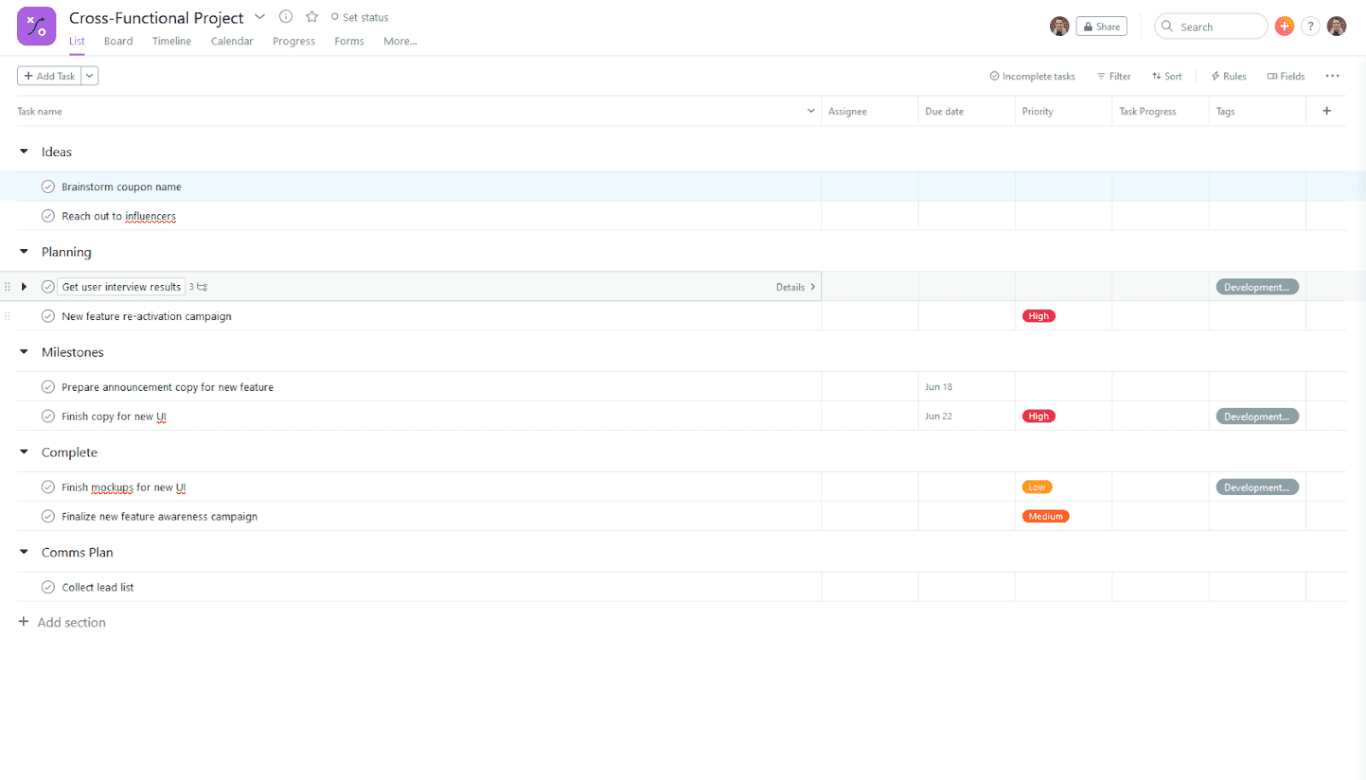
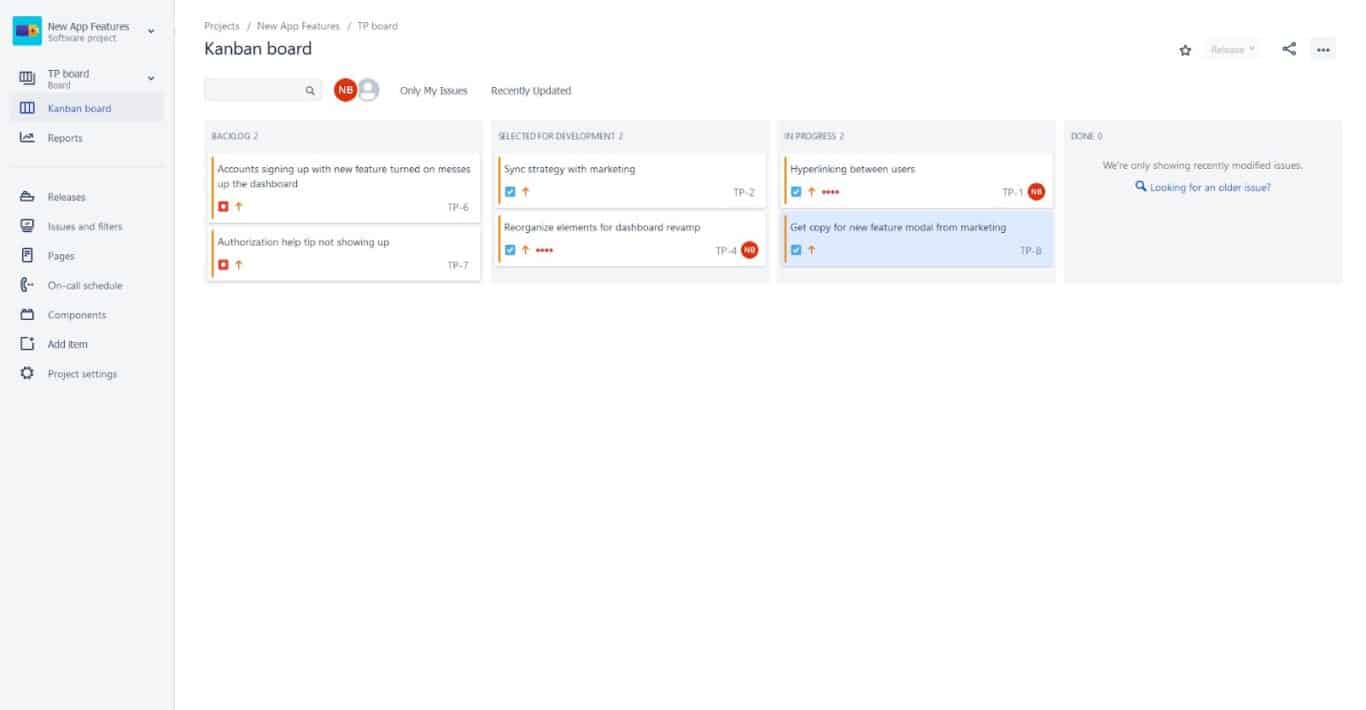
Because the Asana project is used by the marketer and writer when they collaborate, not every single task in Asana needs input from the developer. That’s why the marketer creates the “Development Required” tag. Likewise, the developer has plenty of issues in Jira that the marketers don’t need to see, so they create the “NeedMarketers” label in Jira. By creating a rule in Unito, they can filter tasks with the appropriate label in each tool.
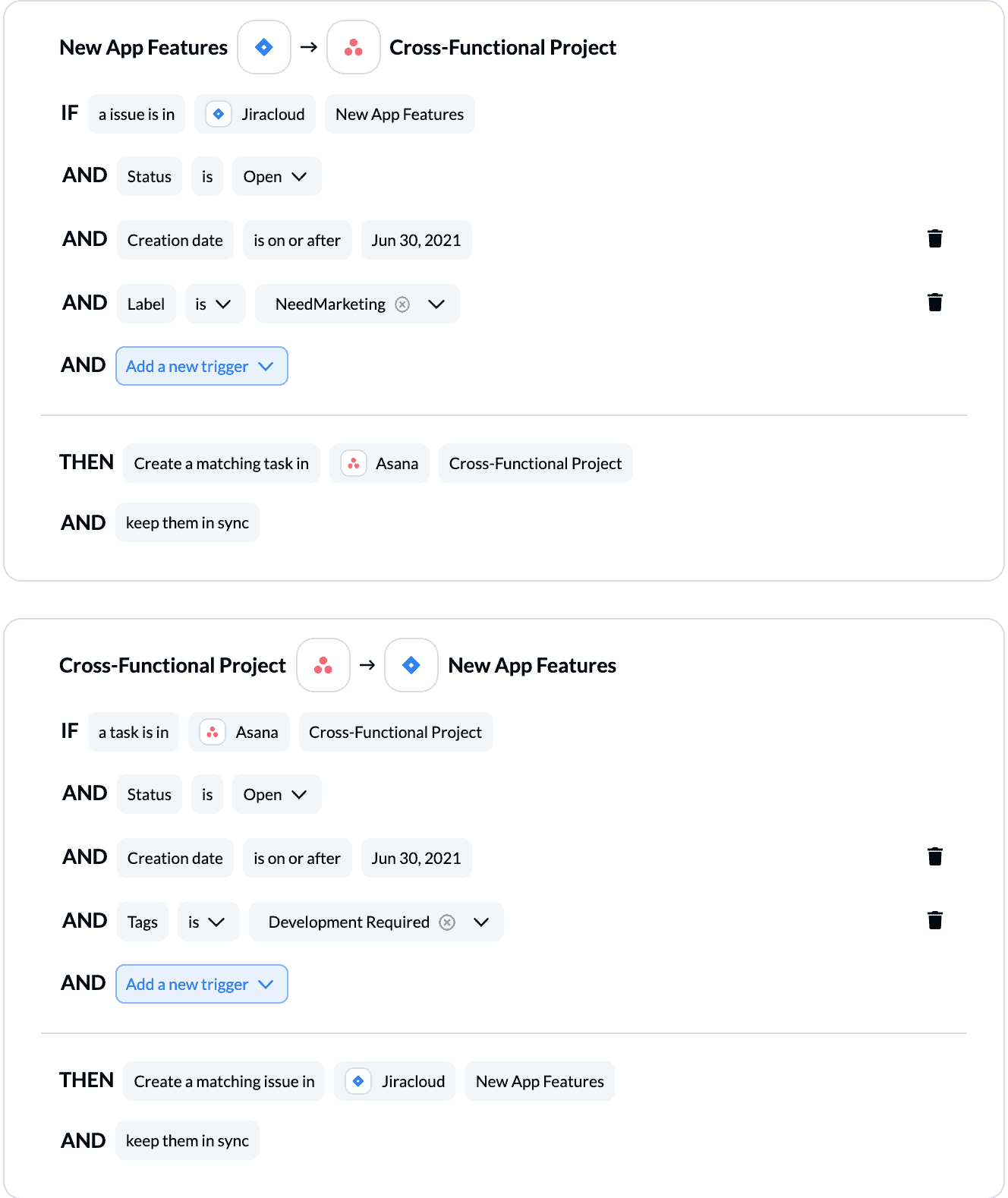
Unito also allows this squad to customize how information flows through each tool. In Jira’s Kanban board, tasks are split up in the Backlog, Selected For Development, In Progress, and Done lists. This doesn’t really match the sections in Asana exactly, but there are similarities. With Unito’s mapping feature, the squad can make sure tasks follow the same process — from planning to completion — in both tools.
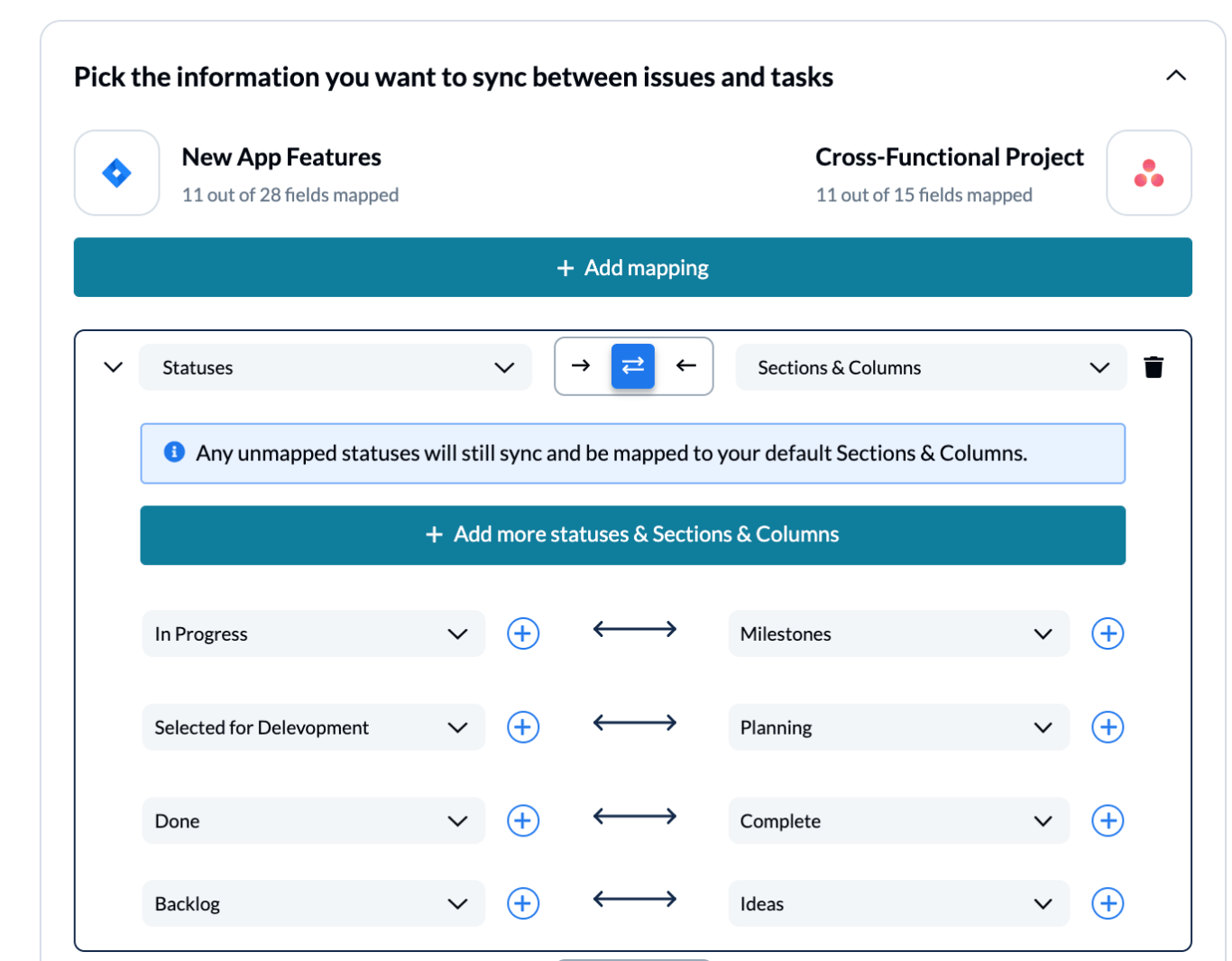
Notice that Asana also has a section, “Comms Plan,” that isn’t represented by an equivalent list in Jira. This section includes tasks that stay in marketing. With the mapping or filtering feature, this section can be excluded from the workflow, so even if “Development Required” tasks end up here, they won’t be synced to Jira. Here’s the final result:
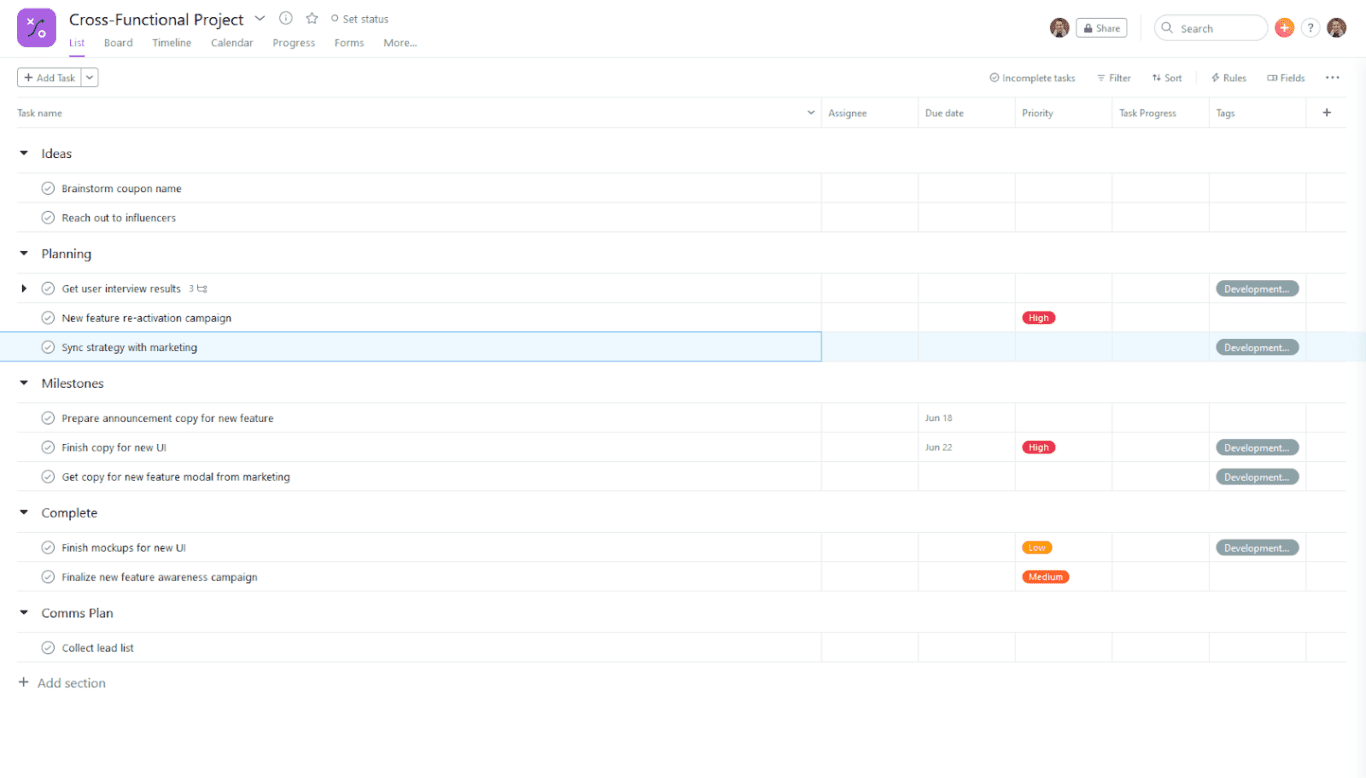
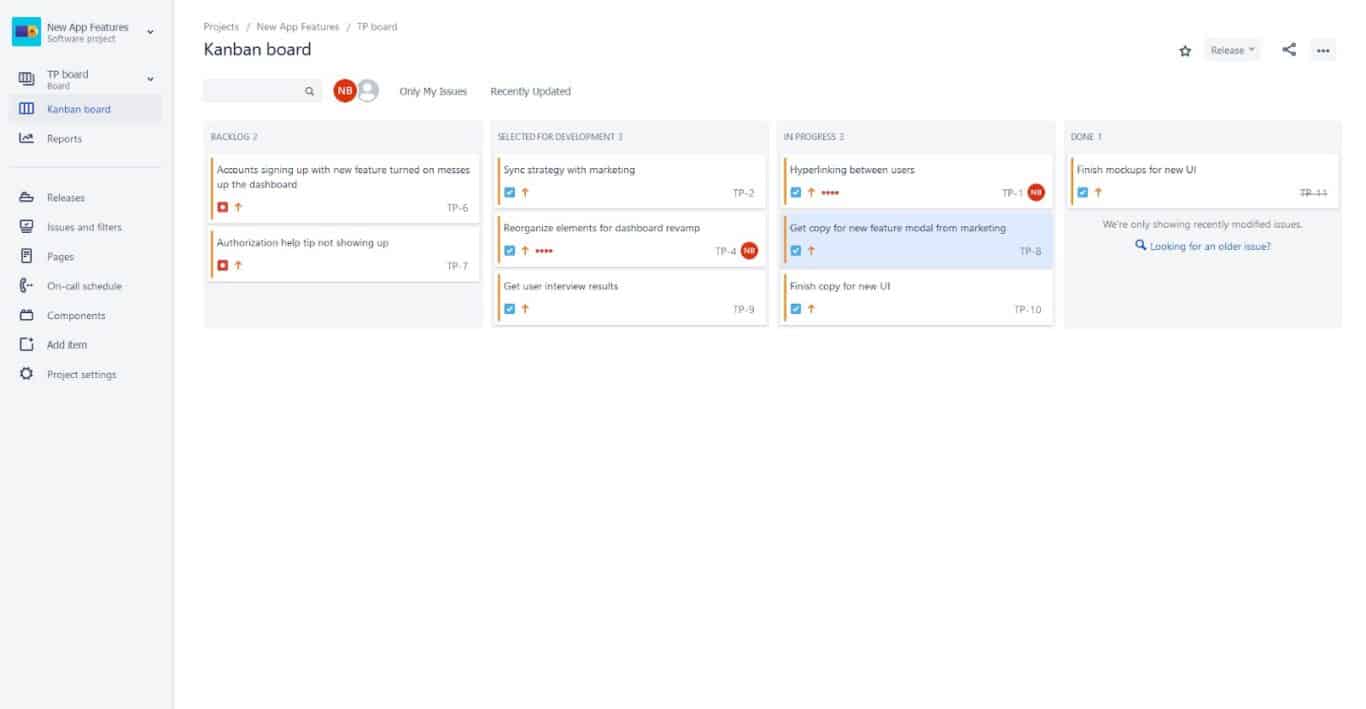
With this system in place, both marketers and developers can use their tool of choice while contributing to the project, confident that nothing gets lost in translation.
Managing the launch of a new web page
Creating new content for a website involves multiple people. After the request for a new page is made, someone — generally a marketer — is responsible for figuring out the strategy behind the page. Then, a designer will usually create mockups and assets for the page while a writer provides copy. These go to the developer who actually builds the page. Assuming everything goes according to plan, this is a smooth, simple workflow.
But how often do things go according to plan?
The workflow without Unito
Highly visible content, like a web page, requires feedback and frequent communication. The first step of the workflow alone — from strategy to mockup — might go back and forth between the marketer and the designer as requests for feedback and clarification are made. The same goes for copy and building the page. If everyone’s working in different tools, these requests might be made outside of them, through chat or email. Same thing for the reply. When a project relies on these decentralized methods to move along, how can someone know what’s up-to-date?
For example, say the copywriter has just finished their first crack at the web page copy. They send it to the marketer in charge of strategy for feedback. It comes back, the changes are made and the copy is passed on to the designer. If a stakeholder suddenly comes in asking to look at the copy, which document is going to get sent to him? The original document the writer sent, or the one with the changes? And what if the designer had their own changes to make? A simple document — copy for a web page — can quickly spawn multiple versions, until no one knows which one is accurate.
Accurate, efficient communication is already difficult. Communicating across tools throughout a workflow that can bounce back and forth like this is a haven for miscommunication. Forcing everyone into one tool can feel like a solution, but if this tool is only used for cross-functional projects, it can quickly get outdated.
Where Unito comes in
When tools are synced to each other, individual tasks become universal sources of truth. Instead of changes to copy being made across documents through chat and email, they can be found in a single place. Whether that document is attached to an Asana task, Trello card, or Jira issue, it can be synced across tools so everyone has access to the same information. This makes version control a breeze, since everyone knows where to go for the latest updates. The same goes for mockups and other visual assets.
Running a workflow across collaborators can feel like an ad-hoc system of lackluster communication and detours. With Unito, your tools will feel like they were designed to work together. Instead of figuring out a way to make your workflow work around your tools, you can tailor work management platforms to your workflow.
The tool debate doesn’t need to exist, communication can be kept within tools, and everyone’s on the same page.
Syncing multiple Trello boards together
The previous example showed you how to sync multiple project management tools together to optimize your workflow. But what about when everyone’s on the same tool?
Just because everyone’s on the same tool doesn’t mean your workflow can’t hit any hiccups. Let’s say you have contributors from multiple teams keeping your website running, and they all work in Trello. They all have their own Trello boards with personal cards, and they have access to multiple boards for different projects. One of these boards is for the website, but it’s hardly a centralized place for website work. That’s because work happens on this board as well as each personal board, and any kind of progress made has to be copied over from one board to another. Copying over so much work is a hassle, and sometimes cards get forgotten.
The solution to this? A Trello master board. By syncing multiple boards with Unito, cards representing website work can be plucked from individual boards and collected on the website board. That makes this single board the one place any collaborator can go to for updates on website work. When creating a workflow with Unito, cards can be automatically tagged as they come in. Cards that cover copy changes can be tagged with “copy,” development cards are tagged with “development” and so on.
You’ve seen Unito’s rule feature above, which ensures only certain cards get synced. In this case, something similar can be done by creating a rule that only syncs cards labeled with “website.” That’s because you wouldn’t want every card from someone’s personal board ending up in the master board.
With everything synced over and properly labeled, anyone working on the website can get a bird’s-eye view of what’s going on. Copy tasks are easily tracked, and attachments that need feedback are visible. No more searching through a Google Drive for the right document, and comments are all in the same place.
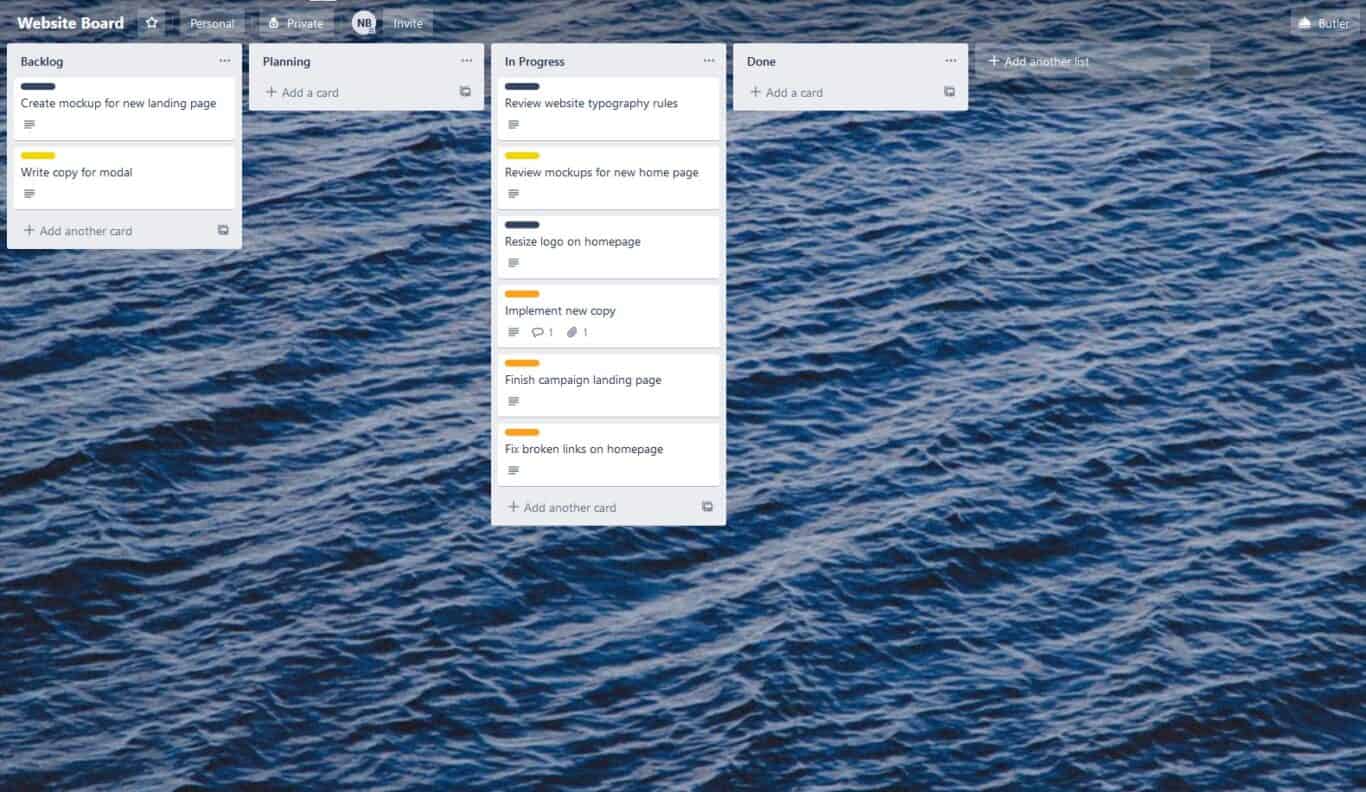
Eliminating the cross-functional no-man’s land
Working across teams doesn’t mean you have to accept difficult communication and tool debates. With Unito, you can limit unnecessary meetings, cut down the email chains, and keep tasks from falling through the cracks —no matter what tool you’re using.

